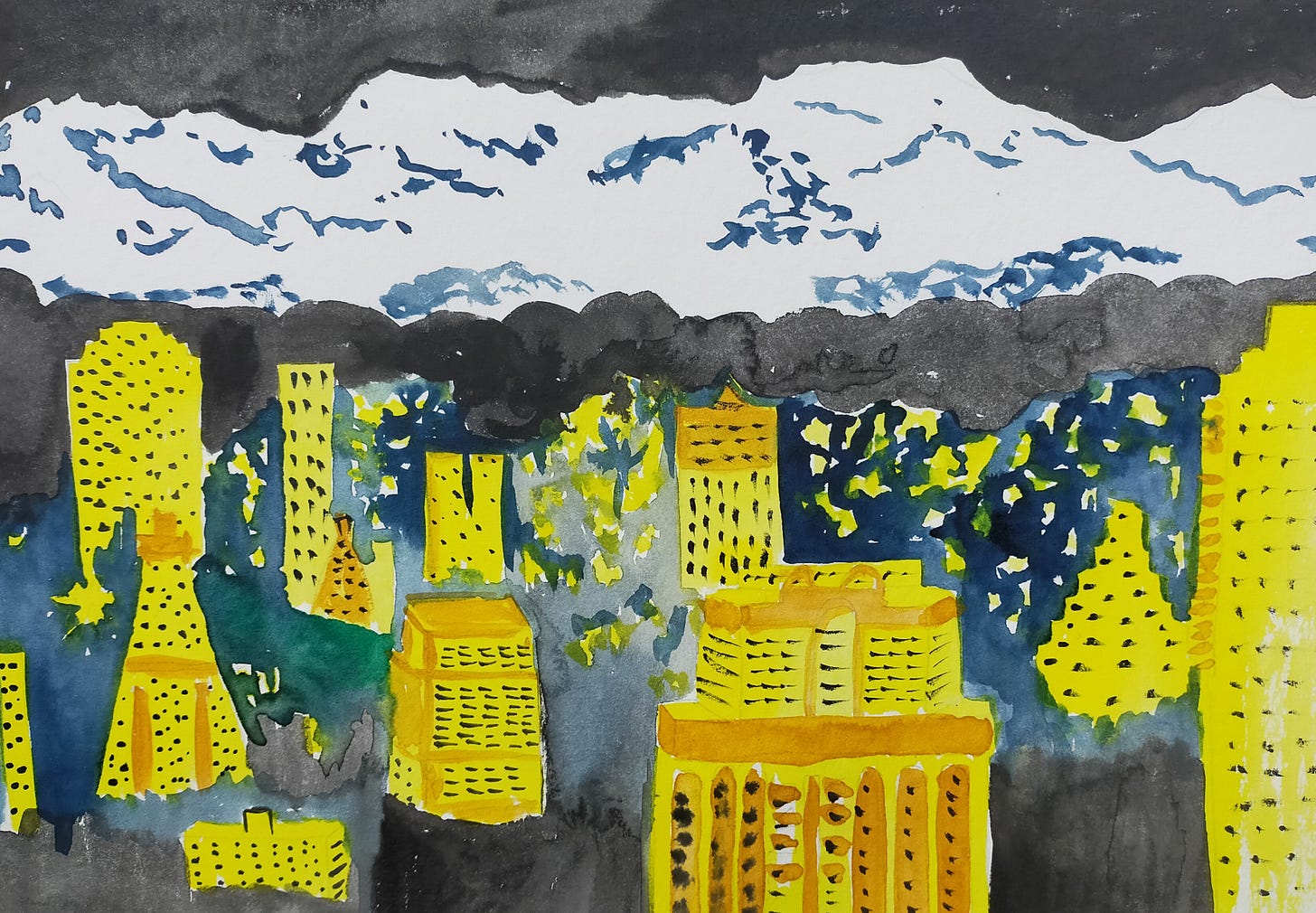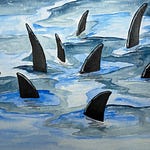Dear readers,
I hope this finds you well. This month, I look at the controversy surrounding a word that many of you will have become quite familiar with, and I highlight two of the countless ways that word is coming to fruition. I look forward to your thoughts.
Regards,
Alia
The water trickles from the taps for just a few hours a day, the pressure, so low, it won’t reach the top floor apartments. Electricity fizzles out for hours at a time. Residents religiously fill plastic bottles and containers. Civil servants have been told to stay home and on days of suffocating air pollution, schools have been shut. It’s been hot; this past summer temperatures regularly reached 40°C and the cooler air of October has been welcome. Still, the rain won’t come and five years of drought and entrenched bureaucratic mismanagement have left the region’s four major dams at 9% capacity. The ground subsides as water is sucked from below the surface to find its way to the lips of 19 million people and an industry with an unquenchable thirst. The wetlands are dying.
Nineteen-million people—the population of Iran’s Tehran Province, which sprawls out from the nation’s capital Tehran in the shadows of the imposing Alborz Mountains. The mountains, gold dry and starkly beautiful are snowcapped in winter, but they excel in capturing rain and sending it northward, away from the city. Millions more in surrounding regions, too, are affected. This past year has seen just 142 mm of rain in Tehran, less than I just tipped from my rain gauge here in the alpine valleys of Victoria after just three weeks collection.
The Iranian water crisis is so severe that President Masoud Pezeshkian has said there is no choice but to move the capital more than 1,000km to the south, establishing a smarter, planned city on the shores of the Persian Gulf, across the way from Dubai, Abu Dahbi and Doha. Previous presidents, too, have tried; the capital’s fall has been a long time coming. But such drastic change has its opponents, and now, as the capital ceases to effectively function, the people watch for signs of what Iran’s Supreme Leader Ali Khamenei will ultimately decide.
History is littered with the remains of ancient cities abandoned when climatic patterns shifted: Angkor (Cambodia), Mesa Verde (United States), Tikal (Mexico), Çatalhöyük (Turkey), Ur (Iraq), each once grand and lively. The earth is in a constant state of change. Seas become coastlines become forests become deserts become seas. It’s the natural way of things. And yet, what is happening now is not entirely natural. Inevitable, yes, eventually; but not for this moment in time—humans have hit the accelerator, sped off on a joy ride as if completely oblivious to the speed limit that exists to maintain order.
This moment—now—is what we call the Anthropocene; the era of human-induced climate change. Although it’s all rather unofficial, at least where epochs are concerned. In fact, the term has unleashed a bit of geological drama. The International Commission on Stratigraphy—the peak body that defines our geological time scales—is not convinced.
I find it amusing that I had to look up what epoch we’re currently in. I’ve never described myself as existing withing the Holocene, that geological phase in time that began at the end of the last ice age around 11,700 years ago. And yet, in recent years I’ve become very aware of life having shifted into the Anthropocene. It’s somewhat of a pop culture buzzword.
It makes sense that we would want to define the profound climatic shift we have inflicted upon ourselves. Anthropocene is catchy. Derived from the Greek, ánthropos, meaning ‘human’ and -cene from kainós, meaning ‘new’, its use is only set to grow as more cities like Tehran succumb to their own ill-conceived environmental practices, causing them to crumble under the pressure of our changing environment. Already, the world’s most vulnerable are being displaced by our global mismanagement. Rising sea levels are causing low-lying island nations, like Tuvalu in Polynesia, to depopulate. In June this year, one third of the nation’s 10,000 residents applied to immigrate to Australia under a new climate change visa, although capped at 280 people per year, the process will be slow. One by one, Tuvalu’s people will set sail in the rising tide, until one day it will cease to exist. At what point does a nation die?
Globally, we have failed to bring emissions down to levels that will restrain rising air and sea temperatures. We are warming quickly now. This is the Anthropocene, and yet, it is not.
Last year, a panel of geologists from the International Commission on Stratigraphy voted against a proposal by the Anthropocene Working Group to end the Holocene and mark the beginning of a new epoch. None on the panel disputed the impact of humans on climate, but given epochs are time scales identified by geological characteristics that occur over millions of years, the time frame of the Anthropocene (and the Holocene, too, for that matter), would be unusually short. Moreover, epochs are divided into ages, and sitting within the Holocene is the Meghalayan Age, a time of relatively stable climate and human-driven environmental change, like farming and industry. Arguably, it would be more appropriate for the Anthropocene to succeed this age rather than mark the start of a new geological epoch, especially given we continue to live within the interglacial conditions characteristic of the Holocene.
Unfortunately, the suffix -cene is used only for epochs, meaning the Anthropocene would need a new name, not ideal given its acceptance into our lexicon. Perhaps Anthroposaion (a combination of ánthropos and aion, meaning ‘age’, will sound close enough.
Formalities aside, the Anthropocene may not be a geological epoch, but it is nevertheless real. The world’s weather patterns are shifting, life and what sustains it is moving. Species that cannot move or adapt will perish, and we, having built our metropolises and food bowls based on the old, need to be flexible and unfixed. We need to create and embrace new ways of doing things. A great migration has begun. Tehran—one of the largest cities in Western Asia—is about to run out of water, and the rest of civilisation needs to be prepared to do more than just take note.
Thank you for Mind Flexing with me. If you enjoyed this essay, please subscribe on Substack or your favourite podcast app, comment, click the ❤️ button, or share it with someone who would appreciate it. I’ll be back in a month. Until then, keep 💪














